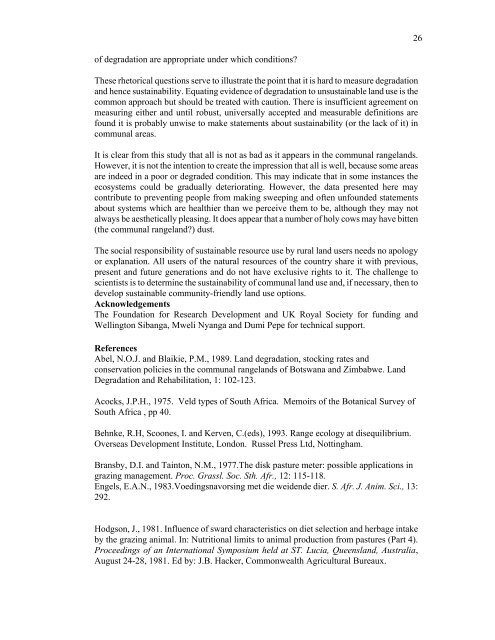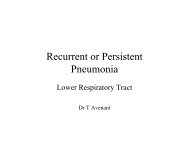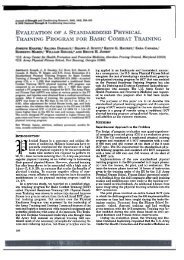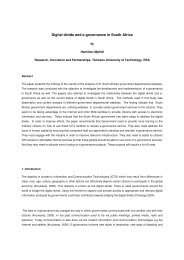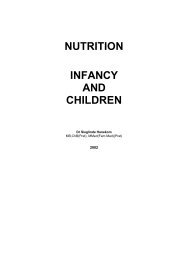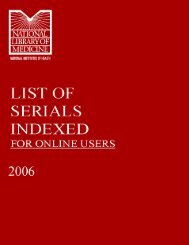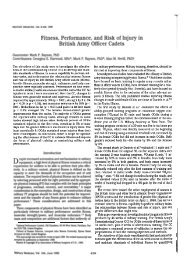Research and Training Strategies for Goat Production Systems in ...
Research and Training Strategies for Goat Production Systems in ...
Research and Training Strategies for Goat Production Systems in ...
Create successful ePaper yourself
Turn your PDF publications into a flip-book with our unique Google optimized e-Paper software.
of degradation are appropriate under which conditions?<br />
These rhetorical questions serve to illustrate the po<strong>in</strong>t that it is hard to measure degradation<br />
<strong>and</strong> hence susta<strong>in</strong>ability. Equat<strong>in</strong>g evidence of degradation to unsusta<strong>in</strong>able l<strong>and</strong> use is the<br />
common approach but should be treated with caution. There is <strong>in</strong>sufficient agreement on<br />
measur<strong>in</strong>g either <strong>and</strong> until robust, universally accepted <strong>and</strong> measurable def<strong>in</strong>itions are<br />
found it is probably unwise to make statements about susta<strong>in</strong>ability (or the lack of it) <strong>in</strong><br />
communal areas.<br />
It is clear from this study that all is not as bad as it appears <strong>in</strong> the communal rangel<strong>and</strong>s.<br />
However, it is not the <strong>in</strong>tention to create the impression that all is well, because some areas<br />
are <strong>in</strong>deed <strong>in</strong> a poor or degraded condition. This may <strong>in</strong>dicate that <strong>in</strong> some <strong>in</strong>stances the<br />
ecosystems could be gradually deteriorat<strong>in</strong>g. However, the data presented here may<br />
contribute to prevent<strong>in</strong>g people from mak<strong>in</strong>g sweep<strong>in</strong>g <strong>and</strong> often unfounded statements<br />
about systems which are healthier than we perceive them to be, although they may not<br />
always be aesthetically pleas<strong>in</strong>g. It does appear that a number of holy cows may have bitten<br />
(the communal rangel<strong>and</strong>?) dust.<br />
The social responsibility of susta<strong>in</strong>able resource use by rural l<strong>and</strong> users needs no apology<br />
or explanation. All users of the natural resources of the country share it with previous,<br />
present <strong>and</strong> future generations <strong>and</strong> do not have exclusive rights to it. The challenge to<br />
scientists is to determ<strong>in</strong>e the susta<strong>in</strong>ability of communal l<strong>and</strong> use <strong>and</strong>, if necessary, then to<br />
develop susta<strong>in</strong>able community-friendly l<strong>and</strong> use options.<br />
Acknowledgements<br />
The Foundation <strong>for</strong> <strong>Research</strong> Development <strong>and</strong> UK Royal Society <strong>for</strong> fund<strong>in</strong>g <strong>and</strong><br />
Well<strong>in</strong>gton Sibanga, Mweli Nyanga <strong>and</strong> Dumi Pepe <strong>for</strong> technical support.<br />
References<br />
Abel, N.O.J. <strong>and</strong> Blaikie, P.M., 1989. L<strong>and</strong> degradation, stock<strong>in</strong>g rates <strong>and</strong><br />
conservation policies <strong>in</strong> the communal rangel<strong>and</strong>s of Botswana <strong>and</strong> Zimbabwe. L<strong>and</strong><br />
Degradation <strong>and</strong> Rehabilitation, 1: 102-123.<br />
Acocks, J.P.H., 1975. Veld types of South Africa. Memoirs of the Botanical Survey of<br />
South Africa , pp 40.<br />
Behnke, R.H, Scoones, I. <strong>and</strong> Kerven, C.(eds), 1993. Range ecology at disequilibrium.<br />
Overseas Development Institute, London. Russel Press Ltd, Nott<strong>in</strong>gham.<br />
Bransby, D.I. <strong>and</strong> Ta<strong>in</strong>ton, N.M., 1977.The disk pasture meter: possible applications <strong>in</strong><br />
graz<strong>in</strong>g management. Proc. Grassl. Soc. Sth. Afr., 12: 115-118.<br />
Engels, E.A.N., 1983.Voed<strong>in</strong>gsnavors<strong>in</strong>g met die weidende dier. S. Afr. J. Anim. Sci., 13:<br />
292.<br />
Hodgson, J., 1981. Influence of sward characteristics on diet selection <strong>and</strong> herbage <strong>in</strong>take<br />
by the graz<strong>in</strong>g animal. In: Nutritional limits to animal production from pastures (Part 4).<br />
Proceed<strong>in</strong>gs of an International Symposium held at ST. Lucia, Queensl<strong>and</strong>, Australia,<br />
August 24-28, 1981. Ed by: J.B. Hacker, Commonwealth Agricultural Bureaux.<br />
26


